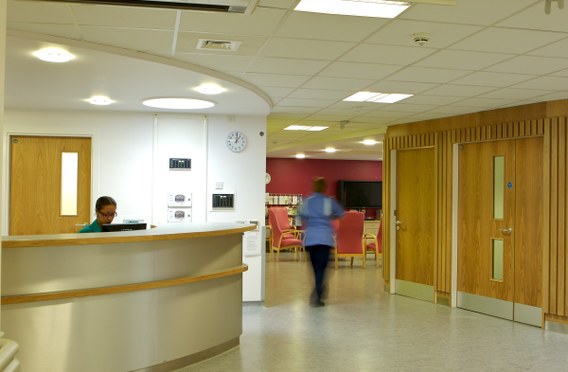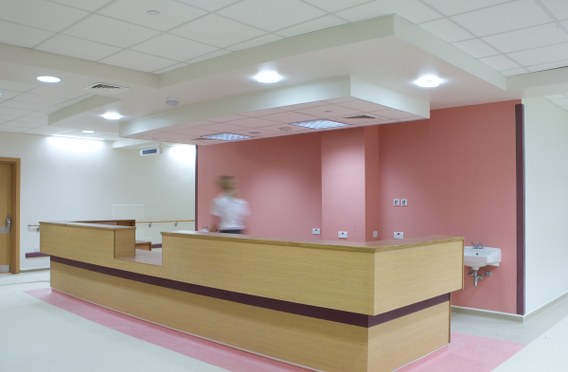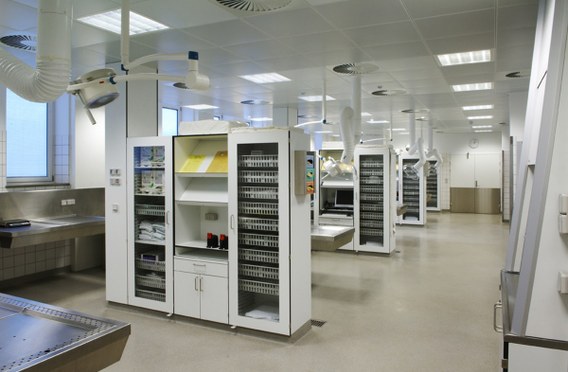Health
Creating the right environment
It is accepted today that a pleasant and well-lit ward or room can help patient recovery and reassure nervous patients. Daylight and a view to the outside world are important, resulting in wards that have large glazed areas. Our knowledge of the effects of light on long-term mental conditions such as dementia is increasing allowing more effective designs providing an improved quality of life.
Lighting in larger healthcare buildings in association with colour schemes can also guide and reassure visitors unfamiliar with the building. However many aspects of healthcare are unchanged, the priority for patient care, the need to be able to diagnose and monitor patient health quickly and accurately, the need for efficient operation at all times of day or night, and to aid these requires a sympathetic building design and quality light.
Best practice
The European Standard EN 12464-1:2011 Light and lighting – Lighting of work places Part 1: Indoor work places provides recommended lighting conditions for healthcare buildings in terms of illuminance levels, colour rendering requirements and glare control. However healthcare also depends upon communication and a level of trust between a patient and their carer. Ensuring lighting of people so they appear friendly and so that body language is readily visible is important in gaining this trust and reassuring a patient in a potentially stressful situation. EN 12464-1:2011 also provides recommendations for cylindrical illuminance to ensure good lighting of verticals, 150lx at 1.2m height. It discusses the modelling index, the ratio between the horizontal and vertical flow of light to provide the correct balance between light and shade, and gives recommended values.
Patients may be confined to their bed or ward for extended periods of time and it is essential that the space has a light and airy feel. EN12464-1:2011 highlights the importance of lighting room surfaces recommending an average illuminance of 75lx on the walls and 50lx on the ceiling. Control of glare, both from natural and artificial light sources, is very important and it should be ensured that ambient and task lighting does not cause discomfort from glare, especially to beds opposite patient controlled task lighting.
The correct lighting condition should exist at all times and this includes during the night when the presence of darkness is important to aid healthy sleep. A balance is required between providing light for night staff and darkness for patients. Low ambient light levels are required with little of no light on the pillow area of beds.
Taking control
Care should be taken to design in the various levels of light necessary for differing tasks and in making these easy to control and adjust. Controls for patient-centric lighting such as for reading etc. should be in easy reach for the patient, whereas controls for additional lighting for examination by carers etc. should be situated remote from the patient to prevent presenting a confusing number of options to the patient and ensuring easy access by healthcare staff.
The lighting should interact with the space, dimming in response to increasing levels of daylight. In ward areas it is unlikely that presence detectors would be effective due to the high occupancy levels but in areas with lower occupancy such as stores, corridors, less frequented rooms, etc. turning lighting on or off in response to occupancy could significantly reduce energy consumption. Simple scene setting to allow lighting to be set for daytime and night-time requirements along with any other frequently required conditions should be used and these should be situated for easy access by healthcare staff.



